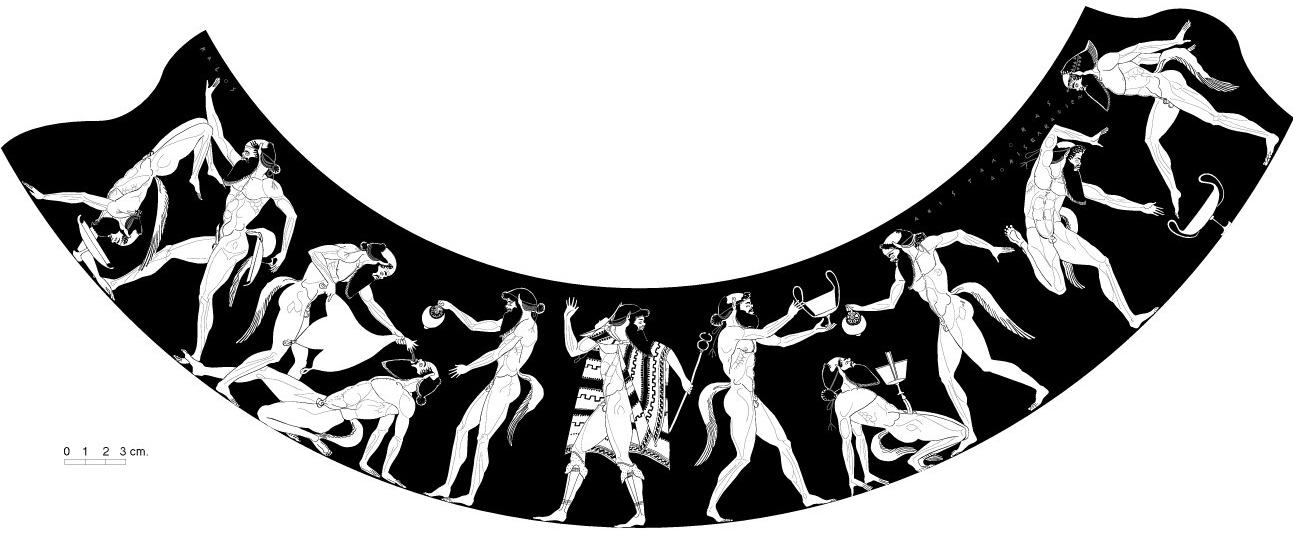 |
Satyrs
from the Mythology of Ancient Greece
| In
Greek mythology Satyrs were half man and half beast. Some
depictions had Satyrs cloven hoofed with goat-like legs
and horns similar to Pan. In other depictions they had
just a horse-like tail and ears. Satyrs were followers of Dionysos, the God of wine, and joined female followers of Dionysos, the Maenads, in the drunken revelry of his rites. Satyrs are libidinous characters and are frequently shown on Greek pottery naked with enormous erections pursuing Nymphs and Maenads. |
 |
| One
excellent example of Greek pottery depicting Satyrs is a
psykter, or wine cooler, on display in the British Museum.
Eleven Satyrs, depicted with horse-like tails and ears,
figure in a scene that encircles the psykter. Above, the
whole circular scene is shown spread out. The central satyr is cloaked and carrying a staff similar to that of Hermes, the messenger of the Gods, and this may reflect the role he is playing in the scene. He is not wearing a kynodesme and his penis hangs loose. On either side of him are five satyrs engaged in drunken frolics with wine jugs and vases. Several satyrs are wearing kynodesmae as is evidenced by their upwardly curling penises. |
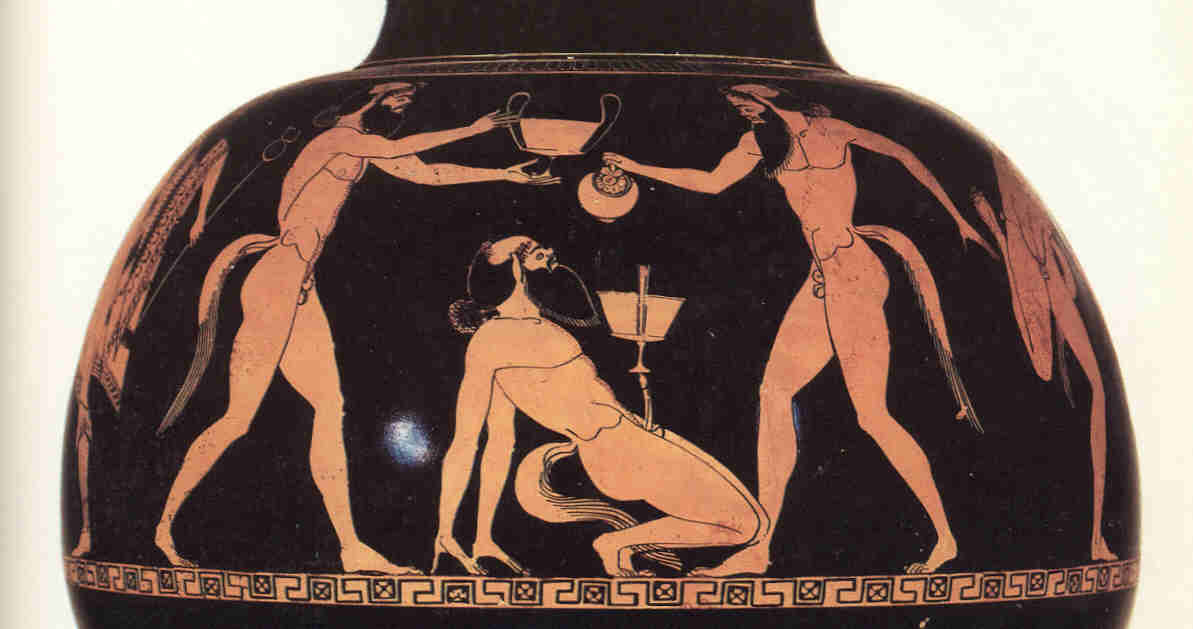 |
| In
the extract shown above the central satyr acrobatically
balances a vase on his erect penis. On either side of him
two other satyrs pour wine into the vase. Both these
satyrs are wearing kynodesmae. It is unusual for satyrs to be depicted on vases wearing kynodesmae. Perhaps these satyrs were trying to imitate humans and adopting the kynodesme was as far as they got, or was as much as they could bear. The central satyr has cast off his kynodesme, abandoned any human decorum and reverted to type. Surely, it can't be long before his companions join him. |
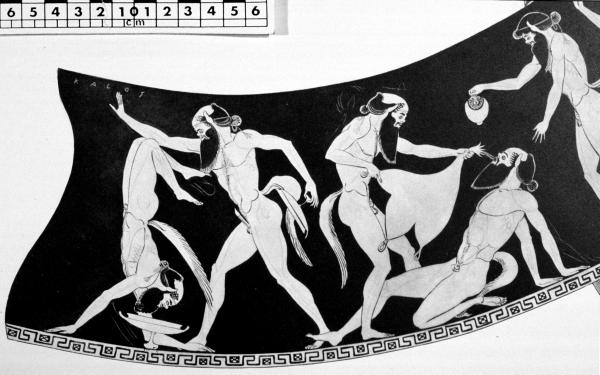 |
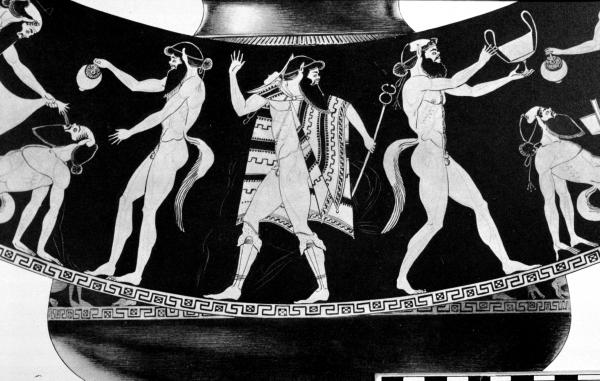 |
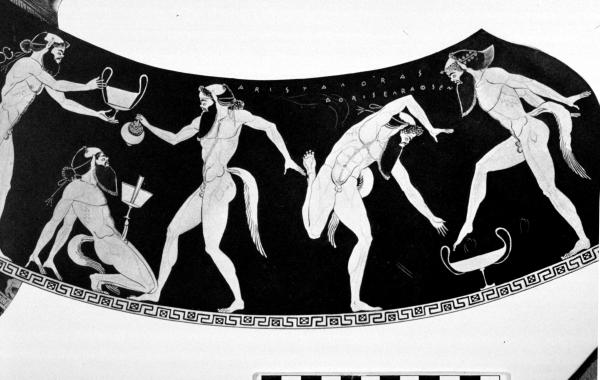 |
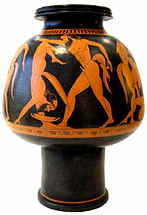 |
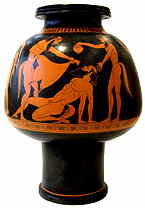 |
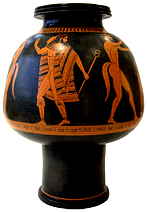 |
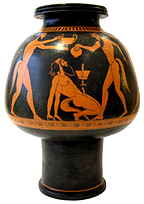 |